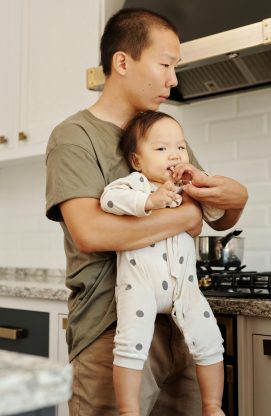Table of Contents
Basic First Aid and CPR Training
One of the most important safety guidelines for babysitters is to have basic first aid and CPR training. Accidents can happen at any time, and knowing how to properly respond in an emergency can make all the difference. By being trained in first aid and CPR, you can provide immediate assistance to a child in need until professional help arrives. Many organizations offer courses in basic first aid and CPR, and it is highly recommended that all babysitters complete this training.
On-Demand Childcare in Your Neighborhood
Book a Sitter
Childproofing the Environment
Another crucial safety guideline for babysitters is to childproof the environment in which they will be caring for the children. This includes removing any potential hazards, such as small objects that could be choking hazards, securing cabinets and drawers with childproof locks, and covering electrical outlets. It is also important to ensure that any furniture in the home is stable and cannot tip over easily. By taking the time to childproof the environment, you can prevent accidents and keep the children safe during your time as a babysitter.
Safe Sleeping Practices
When it comes to infants and young children, safe sleeping practices are essential for their well-being. As a babysitter, it is important to follow safe sleep guidelines recommended by organizations such as the American Academy of Pediatrics. This includes placing infants on their backs to sleep, using a firm mattress with a fitted sheet, and removing any loose bedding or toys from the crib. By following these guidelines, you can reduce the risk of Sudden Infant Death Syndrome (SIDS) and ensure that the children you are caring for are sleeping safely.

Emergency Preparedness
As a babysitter, it is important to be prepared for emergencies that may arise while you are caring for children. This includes knowing the emergency contact information for the parents, as well as the address and phone number of the nearest hospital. It is also helpful to have a first aid kit on hand with essential supplies, such as bandages, antiseptic wipes, and gloves. In the event of a more serious emergency, such as a fire or severe weather, it is important to have a plan in place for evacuating the home safely.
By being proactive and prepared, you can respond quickly and effectively in any emergency situation.
Communication with Parents
Lastly, effective communication with the parents of the children you are caring for is key to ensuring their safety. Before starting a babysitting job, it is important to discuss any specific instructions or guidelines that the parents have for their children. This may include bedtime routines, dietary restrictions, or any allergies that the children may have. It is also important to keep the parents informed of any significant events or issues that arise while you are babysitting, such as a minor injury or a change in the child’s behavior. By maintaining open and clear communication with the parents, you can work together to ensure the safety and well-being of the children under your care.
In conclusion, by following these top safety guidelines for babysitters, you can provide a secure and nurturing environment for the children you are caring for. From basic first aid training to effective communication with parents, these guidelines are essential for every babysitter to know. By prioritizing safety and being prepared for any situation, you can be confident in your ability to care for children and handle any emergencies that may arise.










